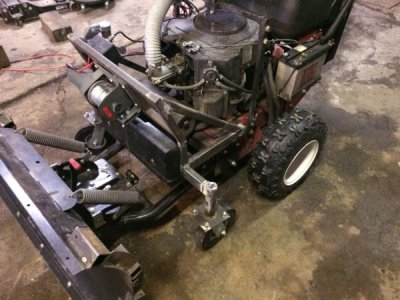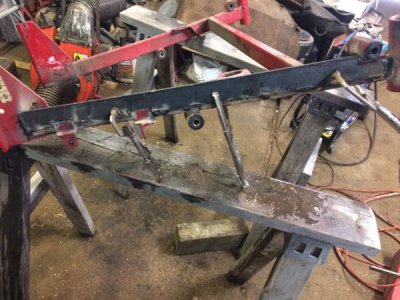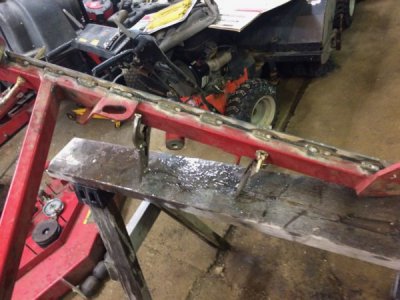In keeping with most consumer devices like this...
...but considering your planning to add even more weight to it...
This is a 52" Snapper Pro Hydro walk behind commercial mower model, not a consumer model. I don't plan on adding anything more to this mower deck. I have made a plow attachment for this mower, but it uses a separate frame. The frame (and deck hanging from it) are unbolted from the drive unit, and a frame made specifically for the plow is bolted on. Here's a pic of the plow/frame attached to the drive unit(it's currently attached to the drive unit):





